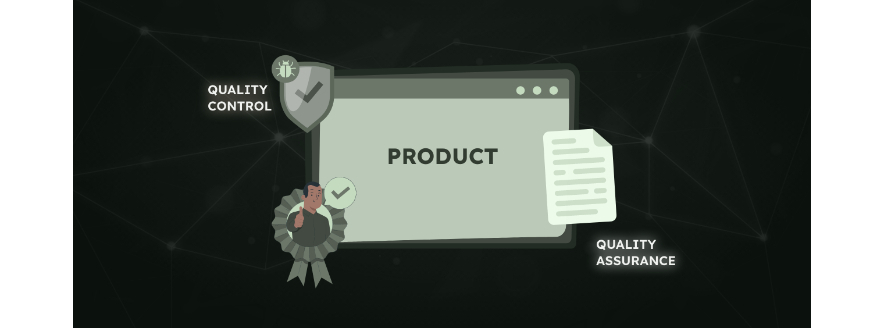SOFTWARE DEVELOPMENT
 October 03, 2025
October 03, 2025
from Idea To Mvp: A Startup Guide To Launching Smarter

Every great startup begins with a bold idea, but ideas are cheap. Execution? That’s where the game is won.
Picture this - two roommates in San Francisco are broke and struggling to pay rent. There’s a big design conference coming up, and all nearby hotels are sold out. They decide to inflate an air mattress in their living room and charge people to stay over. That was the birth of Airbnb, and what they launched at the time wasn’t a polished website or a full fledged business. It was what we now call a Minimum Viable Product (MVP).
For startups and founders, the MVP is more than a buzzword. It’s a survival strategy. Instead of spending months building something you hope people want, an MVP helps you learn what your customers really want, by testing your core idea as quickly and cheaply as possible.
In a world where time and resources are tight, the MVP is your shortcut to clarity. It’s your way of figuring out if your idea is worth pursuing, before sinking thousands of dollars and sleepless nights into something that might flop.
This guide will take you deep into what an MVP actually is, why it matters so much to early stage startups, and how to build one that helps you avoid the biggest trap in tech - building a product no one wants.
What Is a Minimum Viable Product (MVP)?
An MVP is the most basic version of a product that still delivers value to users. It contains only the core features necessary to solve a specific problem for early adopters, and is used to gather feedback and validate assumptions before investing further.
The term was popularized by Eric Ries in the book, The Lean Startup, and its essence is simple:
“Build the smallest thing you can to test your riskiest assumption with real users.”
In other words, it’s about being smart and intentional with what you launch first.
Let’s break that down further.
What an MVP Is
You are not trying to prove your idea is amazing, you’re trying to find out if it’s worth building at all. Startups fail not because they couldn’t build, but because they built the wrong thing.
Let’s say you want to launch an app that connects personal chefs with busy professionals. Instead of building an entire marketplace with in app payments and real time scheduling, your MVP might be:
Why MVPs Matter for Startups
If you’ve ever been stuck in a product cycle for months with nothing to show, you already know why MVPs are critical. Startups face enormous pressure to deliver quickly, prove traction, and stay lean, and MVPs offer a path forward that checks all three boxes.
Speed to Market
Speed is everything in the startup world. While your competitors are overthinking and overbuilding, a well executed MVP can put you in front of real users in weeks, not months.
Remember that you’re not trying to be perfect. You’re trying to be present and valuable early on.
Real World Validation
The MVP forces you to face the most important question, do people actually want this?
You’re testing:
Efficient Use of Resources
Early stage startups often run on tight budgets. An MVP ensures you:
Attracting Early Adopters and Investors
Investors don’t fund ideas, they fund traction. You want an MVP that has:
Types of MVPs
Not all MVPs are created equal. Depending on your product, goals, and available resources, you can approach your MVP in several ways. Below are the most common, and effective types used by founders around the world.
No-Code/Low-Code MVPs
These are built using tools like:
Wizard of Oz MVP
The product looks automated to the user, but the backend is manually handled by you or your team. You’re pretending the product is fully working.
This is best for testing complex processes before automation.
Concierge MVP
Instead of building software, you offer the service manually, one on one. You walk customers through the experience you intend to automate later.
Best for service businesses or complex workflows.
Landing Page MVP
You create a simple landing page that explains your product and includes a clear CTA (e.g., join the waitlist, sign up, book a demo).
This is great for testing interest before you write a single line of code.
Metrics to watch are click through rate, form submissions, email sign ups.
Explainer Video MVP
Create a short video of about 60–90 seconds showing how your product works, whether it exists or not. If users respond positively, you’ve validated interest.
Crowdfunding MVP
Platforms like Kickstarter or Indiegogo allow you to test both interest and willingness to pay.
It is best for physical products or niche gadgets.
Single-Feature MVP
Focus on just one compelling feature that solves the main pain point. Forget everything else.
Best for mobile apps, tools, or platforms where simplicity is key.
How to Choose Your MVP Type
Ask yourself:
Picture this - two roommates in San Francisco are broke and struggling to pay rent. There’s a big design conference coming up, and all nearby hotels are sold out. They decide to inflate an air mattress in their living room and charge people to stay over. That was the birth of Airbnb, and what they launched at the time wasn’t a polished website or a full fledged business. It was what we now call a Minimum Viable Product (MVP).
For startups and founders, the MVP is more than a buzzword. It’s a survival strategy. Instead of spending months building something you hope people want, an MVP helps you learn what your customers really want, by testing your core idea as quickly and cheaply as possible.
In a world where time and resources are tight, the MVP is your shortcut to clarity. It’s your way of figuring out if your idea is worth pursuing, before sinking thousands of dollars and sleepless nights into something that might flop.
This guide will take you deep into what an MVP actually is, why it matters so much to early stage startups, and how to build one that helps you avoid the biggest trap in tech - building a product no one wants.
What Is a Minimum Viable Product (MVP)?
An MVP is the most basic version of a product that still delivers value to users. It contains only the core features necessary to solve a specific problem for early adopters, and is used to gather feedback and validate assumptions before investing further.
The term was popularized by Eric Ries in the book, The Lean Startup, and its essence is simple:
“Build the smallest thing you can to test your riskiest assumption with real users.”
In other words, it’s about being smart and intentional with what you launch first.
Let’s break that down further.
What an MVP Is
- A learning tool, not a final product.
- Built to validate hypotheses: “Do users want this?”, “Will they pay for this?”, “How do they use it?”
- Fast, functional, and focused
- It’s not a prototype which is often non-functional and used internally.
- It’s not a beta version which is more polished and closer to release.
- It’s not about cutting corners or launching trash.
You are not trying to prove your idea is amazing, you’re trying to find out if it’s worth building at all. Startups fail not because they couldn’t build, but because they built the wrong thing.
Let’s say you want to launch an app that connects personal chefs with busy professionals. Instead of building an entire marketplace with in app payments and real time scheduling, your MVP might be:
- A simple landing page explaining your offer.
- A form where people can sign up for a trial.
- You manually match a chef with a user
Why MVPs Matter for Startups
If you’ve ever been stuck in a product cycle for months with nothing to show, you already know why MVPs are critical. Startups face enormous pressure to deliver quickly, prove traction, and stay lean, and MVPs offer a path forward that checks all three boxes.
Speed to Market
Speed is everything in the startup world. While your competitors are overthinking and overbuilding, a well executed MVP can put you in front of real users in weeks, not months.
Remember that you’re not trying to be perfect. You’re trying to be present and valuable early on.
Real World Validation
The MVP forces you to face the most important question, do people actually want this?
You’re testing:
- If users understand your product.
- If they’re willing to pay.
- If your assumptions about their behavior are true.
Efficient Use of Resources
Early stage startups often run on tight budgets. An MVP ensures you:
- Don’t overhire developers or designers too early.
- Avoid feature bloat.
- Spend wisely on what truly matters - feedback, not fluff.
Attracting Early Adopters and Investors
Investors don’t fund ideas, they fund traction. You want an MVP that has:
- Active users
- Signups
- Feedback loops
Types of MVPs
Not all MVPs are created equal. Depending on your product, goals, and available resources, you can approach your MVP in several ways. Below are the most common, and effective types used by founders around the world.
No-Code/Low-Code MVPs
These are built using tools like:
- Webflow or Carrd, for landing pages
- Glide, Thunkable, or Adalo, for mobile apps
- Bubble, Softr, or Tally. So, for web apps
Wizard of Oz MVP
The product looks automated to the user, but the backend is manually handled by you or your team. You’re pretending the product is fully working.
This is best for testing complex processes before automation.
Concierge MVP
Instead of building software, you offer the service manually, one on one. You walk customers through the experience you intend to automate later.
Best for service businesses or complex workflows.
Landing Page MVP
You create a simple landing page that explains your product and includes a clear CTA (e.g., join the waitlist, sign up, book a demo).
This is great for testing interest before you write a single line of code.
Metrics to watch are click through rate, form submissions, email sign ups.
Explainer Video MVP
Create a short video of about 60–90 seconds showing how your product works, whether it exists or not. If users respond positively, you’ve validated interest.
Crowdfunding MVP
Platforms like Kickstarter or Indiegogo allow you to test both interest and willingness to pay.
It is best for physical products or niche gadgets.
Single-Feature MVP
Focus on just one compelling feature that solves the main pain point. Forget everything else.
Best for mobile apps, tools, or platforms where simplicity is key.
How to Choose Your MVP Type
Ask yourself:
- What’s my riskiest assumption?
- Can I validate it without code?
- Do I need user interaction or just a signal of interest?



LEAVE A COMMENT